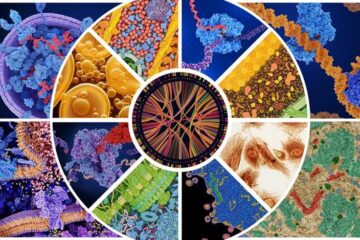Localized Chemotherapy to the Liver Spares Healthy Tissue

In this retrospective study, eighty-eight patients with advanced hepatocellular carcinoma (HCC) were treated with long-term chemotherapy infusion into the hepatic artery, the main artery that supplies the liver. Known as hepatic arterial chemotherapy, this treatment requires a reservoir/pump system to supply the drug directly to the liver and the liver cancer. The reservoir port systems currently available have to be surgically implanted, making this treatment unavailable to many patients who were unable or unwilling to have the implant. Interventional radiologists — vascular experts who are uniquely skilled in using the vascular system to deliver targeted treatments via catheter throughout the body — adapted conventional venous ports to use in the arterial circulation. In this method, the interventional radiologist implanted the reservoir and then embolized – mechanically blocked – the arteries to the adjacent areas during the port placement to prevent the influx of drugs to areas outside of the liver. This is beneficial because the chemotherapy drug is only circulated to the organ with the cancer, so the drug does not harm healthy tissue throughout the body. This allows for a higher dose of chemotherapy drug to be used, because the drug is contained.
Hepatic Arterial Infusion Chemotherapy
The hepatic arterial infusion chemotherapy was initiated after reservoir implantation on an outpatient basis. The infusion protocols were decided for each patient by the physician in charge and chemotherapeutic agents were administered every 1–4 weeks. In 55 patients, cisplatin (10 mg/m2) and 5-fluorouracil (1,000 mg/m2) were given at 1 hour and 5 hours, respectively. In the other 33 patients, doxorubicin hydrochloride or epirubicin hydrochloride (10–20 mg/m2) were injected every 2–4 weeks in a “one-shot” manner.
Implantation of Reservoir and Response to Arterial Infusion Chemotherapy
Reservoirs were successfully implanted in all patients. Arterial infusion chemotherapy was performed 13.1 times per patient on average. Tumors completely disappeared in one patient (complete response, 1%), shrunk at least 50% in maximum diameter in 14 patients (partial response, 16%), shrunk 25%–50% in five patients (minor response, 6%), and remained stable in 68 patients (77%). No tumors showed progression. The tumor response rate (complete and partial responses) was 17%.
Survival
The follow-up period ranged from 1.4 months to 41.4 months, with a mean of 12.0 months. The estimated 1-, 2-, and 3-year survival rates were 55%, 36%, and 24% in all patients, with a mean survival period of 19.5 months ± 1.9.
This study showed similar results as those achieved in previous studies. The therapeutic response rate, 1-year survival rate, and mean survival time were 17%, 55%, and 19.5 months, respectively. By comparison, Okuda et al, analyzed the natural history of HCC and reported the prognoses of untreated patients. The median survival times were 0.7 months in patients with Okuda stage III disease, 2.0 months in those with stage II disease, and 8.3 months in those with stage I disease. The survival of patients with portal venous invasion has been reported to be 3–4 months. Arterial infusion chemotherapy seems to improve survival in patients with HCC. In the present study, the mean survival periods were more than 1 year even in patients with Okuda stage II/III disease (15 months) and in those with portal venous invasion (16 months).
Prognostic Factors Identified
In the univariable analysis, the following eight variables were significantly linked with better prognosis: (i) tumor extension less than 50% of liver volume, (ii) CLIP score 0–2, (iii) Okuda stage I, (iv) alkaline phosphatase level of less than 140 IU/L, (v) absence of ascites, (vi) aspartate aminotransferase level less than 80 IU/L, (vii) good therapeutic response, and (viii) lack of portal venous invasion. When multiple variables were analyzed, the CLIP score, Okuda stage, and therapeutic effect were found to be significant prognostic factors with independent value for survival.
Although these results should be confirmed in future prospective studies, these prognostic factors should prove helpful in determining which patients with advanced HCC may benefit from arterial infusion chemotherapy with an implanted port system.
Media Contact
All latest news from the category: Health and Medicine
This subject area encompasses research and studies in the field of human medicine.
Among the wide-ranging list of topics covered here are anesthesiology, anatomy, surgery, human genetics, hygiene and environmental medicine, internal medicine, neurology, pharmacology, physiology, urology and dental medicine.
Newest articles

A universal framework for spatial biology
SpatialData is a freely accessible tool to unify and integrate data from different omics technologies accounting for spatial information, which can provide holistic insights into health and disease. Biological processes…

How complex biological processes arise
A $20 million grant from the U.S. National Science Foundation (NSF) will support the establishment and operation of the National Synthesis Center for Emergence in the Molecular and Cellular Sciences (NCEMS) at…

Airborne single-photon lidar system achieves high-resolution 3D imaging
Compact, low-power system opens doors for photon-efficient drone and satellite-based environmental monitoring and mapping. Researchers have developed a compact and lightweight single-photon airborne lidar system that can acquire high-resolution 3D…





















